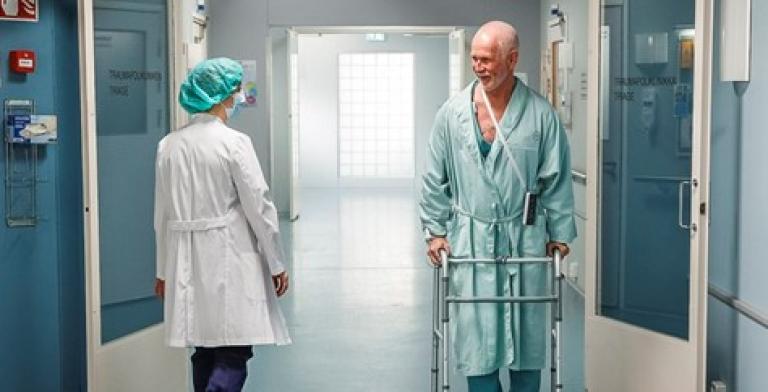
In light of the potential for harm and increased costs the Society of Hospital Medicine has included a recommendation on its Choosing Wisely list to not order cardiac telemetry monitoring outside the intensive care unit (ICU) unless a protocol is in place that governs its indication and discontinuation.5 Dr. Lee Goldman, M.D. at the University of California San Francisco echoes these sentiments stating, “Inpatient telemetry monitoring should not be used indiscriminately but rather should be reserved for patients who are not sick enough to meet the criteria for coronary care unit admission yet truly are at sufficiently high risk to deserve in-patient monitoring rather than monitoring in a less intensive chest pain evaluation unit.”6
Dr. Goldman’s assertion is supported by Dr. Lakshmi Durairaj, M.D. and colleagues who found that certain patients admitted through the emergency department with and without chest pain could have telemetry monitoring safely withheld without consequence.7 Another significant problem on wards continuously monitoring telemetry is alarm fatigue.1 Alarm fatigue refers to tuning out frequent false alarms and is of such high concern due to the potential for critical events to go unnoticed.8 The problem of alarm fatigue is important enough to warrant the Joint Commission on Accreditation of Healthcare Organizations recommending the reduction of unnecessary monitors and alarms as a National Patient Safety Goal since 2014.9
While telemetry is a powerful tool for real-time monitoring of a patient’s heart rhythm, it is often prescribed in an effort to identify patient deterioration.10 Despite this fact, Drs. Najafi M.D. and Auerbach M.D. warn that telemetry cannot replace more frequent vital sign checks or lower nurse to patient ratios and may lead to a false sense of security regarding a patient’s condition.10
The benefits and dangers of continuous telemetry monitoring in the hospital wards are clear. Recognizing that telemetry is appropriate for some patients but not others should lead to efforts by hospitals to take a more conservative approach to selecting patients based on appropriate and established guidelines. While implementation of new standards may seem laborious and daunting, Dr. Sue Sendelbach and colleagues found that using an electronic order set led to significant increases in appropriate monitoring with no rise in adverse events.11
Finally, while continuous telemetry is able to identify and alert clinicians to potentially dangerous heart rhythms it is not capable of continuously monitoring vital signs such as respiratory rate, blood pressure and blood oxygen saturation. Studies show that vital signs may become abnormal up to four hours before an in-hospital cardiac arrest providing ample time to rescue if they are recognized.12
We have seen that indiscriminate use of continuous telemetry in the hospital wards is expensive, labor-intensive and potentially dangerous.4 Dr. Evan Benjamin et al. further showed that reducing the use of telemetry on days when it was not indicated reduced staff workload, hospital costs, and potentially increased patient safety.4 These realizations should lead to reductions in telemetry use in favor of a monitoring solution able to continuously measure vital signs proven to help detect patient deterioration.
A new monitoring platform developed by GE HealthCare takes advantage of the most recent advances in edge computing and wireless technologies to provide continuous monitoring of pulse rate, respiratory rate, and blood oxygen saturation even on ambulating ward patients. The Portrait™ Mobile system utilizes reliable, wearable sensors and a robust network to monitor and relay data to help you identify even the most subtle trends indicating patient deterioration. This new technology has the potential to help you dramatically reduce the incidence of failing to rescue ward patients while also helping reduce false alarms, nursing workload, and even hospital costs.
References:
- Eliminating inappropriate telemetry monitoring: an evidence-based implementation guide. JAMA Intern Med, 2018. https://jamanetwork.com/journals/jamainternalmedicine/article-abstract/2682519. Last accessed 12/10/2019.
- Clinical consequences of electrocardiographic artifact mimicking ventricular tachycardia. N Engl J Med, 1999. https://www.nejm.org/doi/full/10.1056/NEJM199910213411704. Last accessed 12/10/2019.
- Is telemetry monitoring necessary in low-risk suspected acute chest pain syndromes? Chest, 2002. https://journal.chestnet.org/article/S0012-3692(15)51381-0/fulltext. Last accessed 12/10/2019.
- Impact of cardiac telemetry on patient safety and cost. Am J Manag Care, 2013. https://www.ajmc.com/journals/issue/2013/2013-1-vol19-n6/impact-of-cardiac-telemetry-on-patient-safety-and-cost. Last accessed 12/10/2019.
- American Board of Internal Medicine Foundation. Choosing Wisely. Society of Hospital Medicine—Adult Hospital Medicine: five things physicians and patients should question. Washington, DC: American Board of Internal Medicine Foundation,2013. http://www .choosingwisely.org/societies/society-of-hospital -medicine-adult. Last accessed 12/10/2019.
- Telemetry or not telemetry: a great leap forward or a waste of resources? Am J Med, 2001. https://www.amjmed.com/article/S0002-9343(00)00679-3/fulltext. Last accessed 12/10/2019.
- Emergency department admissions to inpatient cardiac telemetry beds: a prospective cohort study of risk stratification and outcomes. Am J Med, 2001. https://www.amjmed.com/article/S0002-9343(00)00640-9/fulltext. Last accessed 12/10/2019.
- Over-monitoring and alarm fatigue: for whom do the bells toll? Heart Lung, 2013. https://www.ncbi.nlm.nih.gov/pmc/articles/PMC4926996/. Last accessed 12/10/2019.
- The Joint Commission. The Joint Commission Announces 2014 National Patient Safety Goal. https://www.jointcommission.org/assets/1/18 /JCP0713_Announce_New_NSPG.pdf. Last accessed 12/10/2019.
- Use and outcomes of telemetry monitoring on a medicine service. Arch Intern Med, 2012. https://jamanetwork.com/journals/jamainternalmedicine/fullarticle/1309575. Last accessed 12/10/2019.
- Implementing practice standards for inpatient electrocardiographic monitoring. Am J Crit Care, 2019. https://aacnjournals.org/ajcconline/article-abstract/28/2/109/4224/Implementing-Practice-Standards-for-Inpatient?redirectedFrom=fulltext. Last accessed 12/10/2019.
- The Prevalence and Significance of Abnormal Vital Signs Prior to In-Hospital Cardiac Arrest. Resuscitation, 2016. https://www.resuscitationjournal.com/article/S0300-9572(15)00389-5/fulltext. Last accessed 12/10/2019.
Not all products are available in all markets
JB15893XX 3/2023








